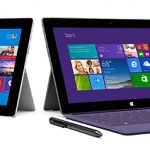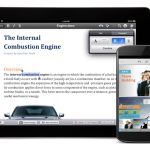Just how much trust can you put in benchmarks? Is Samsung tricking us?

Benchmarks are important. The quoted figures for any piece of hardware are all well and good, but potential buyers need to know how a hard drive, processors, computer, tablet or smartphone really performs. After all, two processors with a clock speed of 3GHz do not necessarily perform equally well, and it is only through testing that it is possible to determine which one comes out on top. Few people have the means to go out and compare two similar pieces of hardware, so this is where benchmarks prove useful.
People use smartphones and tablets for different things. One person might be happy being able to take notes and make phone calls, while someone else might be looking for a 60fps hi-def gaming experience. Here benchmarks matter. It is important to be able to accurately compare devices using reliable figures. If you want to know how quickly phone A shifts pixels around the screen compared to phone B, it is important that the tests are performed in the same way, and are carried out fairly.
IBM acquires The Now Factory to extend its big data portfolio

IBM has announced that it's reached an agreement to acquire The Now Factory, a Dublin-based provider of analytics software that helps communications service providers (CSPs) deliver better customer experiences and drive new revenue opportunities.
Using The Now Factory’s software, CSPs can gain real-time insights into their customers by analyzing massive quantities of network and business data. With this type of insight they can provide an enhanced quality of service by better managing negative experiences and network outages.
The most popular stories on BetaNews this past week -- September 22-28

Microsoft held an event in NYC to launch the Surface 2 and Brian was live-blogging. The full video of the launch is available to view online as are advertisements that show off the tablets' versatility. Microsoft is pinning a lot on the updated product after the first generation suffered from poor sales. There were no great new features, but there is a redesigned kickstand, a healthy speed boost, new dock and updated covers -- Brian was particularly impressed by the Blades.
Anyone buying a Surface 2 or Surface Pro 2 earns themselves a SkyDrive upgrade. Purchase a new device and your online storage gets upgraded to 200GB, but the same amount of space is available for $100 per year. Moving away from Surface-related news, Microsoft turned its guns on Google Docs, highlighting user complaints to demonstrate the superiority of Office 365.
Touch can save Windows 8.1

Windows 8 started out on shaky legs, but Microsoft's flagship platform found firmer footing during the lucrative back-to-school buying season, foreshadowing Santa could deliver gifts, rather than coal, this holiday season.
"Touch appears to be coming into its own as a core feature in the Windows ecosystem", Stephen Baker, NPD's vice president of industry analysis, tells me today. The analyst firm released new U.S. retail data showing two bright spots among otherwise tepid sales. "Chromebooks and Windows touch helped offset what could have been much steeper declines this back-to-school season", he says.
15-percent of the US don't want to connect with the rest of us

Not to call out my parents, but neither is online -- they do not own a computer or tablet and, only last week, my mom was rather forcefully pushed into the smartphone world thanks to an aging flip phone. I can at least partially forgive them -- they are not young and these new-fangled gadgets lose them, though others in the same age bracket seem to have moved along with the times.
At any rate, the couple is not alone according to a new report announced by Pew Research. A full 15-percent of Americans are offline and, of those, 94-percent plan to stay that way.
Microsoft announces Surface 2 and Surface Pro 2

At an event in New York, Microsoft reveals the successor to the Surface RT and Surface Pro -- the predictably named Surface 2 and Surface Pro 2 (interesting to note that the "RT" is gone from the former's name) -- and Brian Fagioli was live-blogging from the event. So what do we have to look forward to from the product refresh?
The first generation Surface tablets suffered poor sales and came in for criticism from many quarters, so there is certainly room for improvement.
Google releases a refreshed Quickoffice for Android and iOS -- for free

When I bought the first-generation iPad in 2010, I intended to use it for taking notes in college classes. Unfortunately, the iPad didn't come with an office suite and Microsoft's was not available. And so, I was forced to try a bunch of alternatives. Ultimately, I found one that stood out among the rest -- Quickoffice. I found it to be complete and a pleasure to use.
While my iPad is long gone, Quickoffice has followed me to Android with great results. However, Google bought my beloved Quickoffice in June 2012 and I became very nervous. My concern was that the software development would cease under Google's leadership. I am happy to say that my concerns were for naught -- Google announces today that QuickOffice has been updated and is now free.
Organizations struggle to adapt to the mobile world

As the market gears up for the new iPhone, research from analysts Forrester and mobile engagement company OpenMarket offers some insight into the struggles companies are having to incorporate the use of mobile devices into their business models.
The study of 167 enterprises in the USA, commissioned by OpenMarket, examines how in the era of smartphones, tablets and BYOD, organizations are adapting to the widespread shift to mobile -- both internally and among their customers. It found that 74 percent of businesses surveyed regard mobile as a priority, however, their IT departments are struggling to build and manage mobile solutions using their existing skills and technologies.
New infographic shows the history of mobile technology in business

Mobile technology moves pretty fast these days. Think back ten years and things were very different. Most people had basic mobile phones with physical button keypads, and despite Microsoft’s attempts to bring tablets to the masses it was Apple launching the iPad in 2010 that finally made it happen.
The past decade has seen some amazing innovations, and changed the face of business. According to a 2013 AT&T Technology Poll, 98 percent of small businesses use wireless or mobile technology in their daily operations and 66 percent of small businesses have stated that it would be a major challenge to operate their business without such technology.
Tech festival -- a long weekend in the mud shows battery life needs to improve

For me, virtually any trip out of the house means loading up on various pieces of tech. I, obviously, cannot leave the house without my phone -- my trusty HTC Sensation has been with me for two years -- but there are usually other things to consider as well. While my phone is great for picking up my emails on the move and staying in touch with people via IM, Facebook etc, it’s far from ideal for doing any work.
Depending on where I’m going, and how strong I’m feeling, there are various other pieces of kit I can take with me to make things easier. My Sony Tablet S is easier to type on than my phone, thanks mainly to its larger screen, but it’s not something I like to use for extended periods of time. I could take my laptop with me, or the MacBook Pro, which are great to work on, but rather weighty to hump from place to place.
HubSites lets local businesses harness the mobile web

The Texas-based marketing platform for small businesses Main Street Hub is introducing HubSites. These provide a mobile-friendly landing page to act as a link to a company's main site.
Features include a prominent click-to-call button, the ability to capture testimonials, Google Maps integration, a real-time Twitter feed and more.
10 things a Windows Phone 8 user misses about Android

Adopting Windows Phone 8, and ditching Android, was one of the most daring decisions that I have ever made in my entire tech life. I am the sort of person who does not warm up to major changes (not my strong suit), especially ones that involve transitioning between two polarizing mobile platforms. But, surprisingly, I gave up the flexibility and versatility of the green droid operating system for the glanceable information and simplicity of Windows Phone. Admittedly, it was not smooth sailing from day one.
The problem is that, in order to fully adjust to the change, something has got to give, namely features that I consider to be essential for a modern-day smartphone operating system. For some they may not matter as much, but others -- like me, and maybe you -- are likely to be left wanting for more. And, no, I am not talking about widgets, themes, root or Instagram (it, however, seems to be the tech media's favorite blaming toy even though there are good third-party alternatives), but rather more down-to-earth, mundane ones.
Migration from XP made more complex by demand for BYOD

Microsoft will pull the support plug on Windows XP on April 8 2014. But with only 10 months to go to the deadline as many as 39 percent of enterprises have yet to migrate to another version of Windows, warns services and solutions company ITC Infotech.
Current trends towards BYOD are also making the migration process more complex but businesses need to address the issues in order to future proof their operations.
Cost, complexity and security concerns hold back mobile enterprise apps

Enterprise application and data security company Mobile Helix has announced the results of an independent survey of CIOs. It shows a large percentage of businesses delaying the roll out of enterprise apps on mobile devices thanks to concerns over security, costs and complexity.
Highlights of the survey, conducted among 300 CIOs in the US and UK, are that companies on average had over 400 applications within their organization but that only 22 percent of them could be accessed from mobile devices despite clear demand from employees for mobile access. Major barriers to adoption are development and support costs along with security.
New platform helps enterprises control documents and embrace BYOD

Point.io has released its new Baas (Backend as a Service) platform. Aimed at document management and workflow, Point.io's offering is designed to help companies maintain control of their content whilst enabling BYOD (Bring Your Own Device).
The application allows developers to build mobile apps that let users access and share content on any device efficiently and securely. Ron Rock, CEO of Point.io says, "By design, enterprises have been locking down their content for decades, but with the shift in workforce mobility it's become critical that content, and the workflows that thrive on it, are unleashed to devices beyond the corporate firewall".
Recent Headlines
BetaNews, your source for breaking tech news, reviews, and in-depth reporting since 1998.
© 1998-2025 BetaNews, Inc. All Rights Reserved. About Us - Privacy Policy - Cookie Policy - Sitemap.